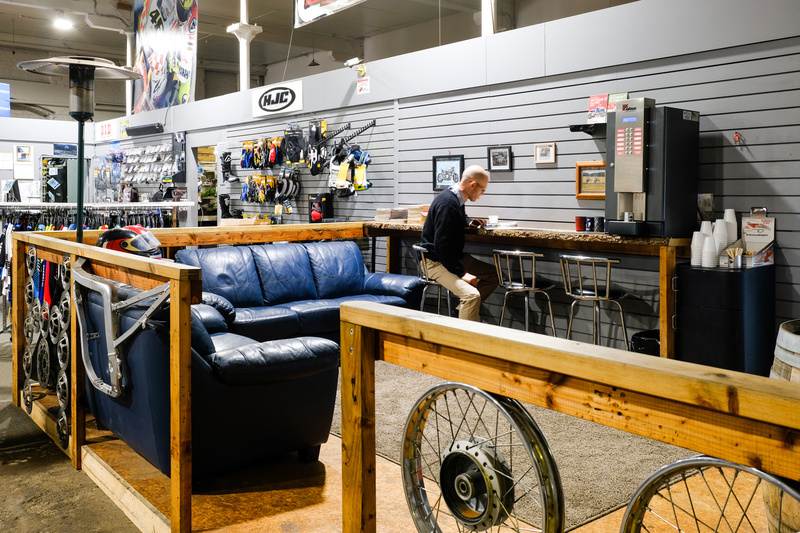Release Efficiency with Premium Motox Parts NZ Available Right Here
Release Efficiency with Premium Motox Parts NZ Available Right Here
Blog Article
Understanding the Essential Components of a Motorcycle: A Comprehensive Guide for Lovers
For bike enthusiasts looking to elevate their riding experience and guarantee their bikes run efficiently, recognizing the crucial elements of a motorbike is paramount. Each component, from the engine's complex functions to the critical role of the braking systems, not just impacts efficiency however additionally safety and comfort. This overview will walk through the essential components that every cyclist ought to recognize with, enabling educated options in both maintenance and possible upgrades. As we begin this expedition, one must ask: just how does each component engage to produce the seamless experience every enthusiast seeks?
Engine Parts

The camshaft plays a crucial duty in controlling the timing of the engine's valves, making certain the accurate opening and closing necessary for efficient fuel and air intake, as well as exhaust expulsion. This timing is vital to maintaining optimal engine performance and efficiency. In addition, the carburetor or fuel injection system, depending upon the motorcycle design, is responsible for mixing air with fuel in the right proportion for combustion.
The cooling system, either air or liquid-based, works to preserve the engine's temperature within functional limitations, avoiding overheating and guaranteeing durability - motorbike shop. Each element, carefully made and integrated, adds to the seamless operation of the engine, defining the bike's power outcome and total efficiency
Transmission System
Important to the motorbike's capability, the transmission system makes sure effective power transfer from the engine to the wheels. This system comprises a number of essential elements, including the clutch, transmission, and final drive, each playing an essential duty in equating the engine's power right into movement. The clutch, usually run by a hand bar, serves to disengage the engine and engage from the transmission, enabling smooth equipment changes and regulated velocity.
The transmission, commonly described as the transmission appropriate, contains a collection of gears that cyclists can by hand shift with to adjust the bike's rate and torque output. These gears are organized in a sequence that allows the motorbike to speed up efficiently and keep ideal engine performance throughout numerous speeds. The majority of motorcycles use a sequential gearbox, calling for the motorcyclist to shift equipments in a predetermined order.
Braking Devices
While comprehending the transmission system is essential to using a motorcycle's power, just as crucial is the capability to control and stop that power successfully, which is where stopping devices enter play. Brakes are essential for safety and security and efficiency, providing the rider with the needed control to browse different surfaces and problems. Normally, motorbikes include 2 kinds of braking systems: disc brakes and drum brakes.
Disc brakes are extra widespread in modern-day motorcycles because of their exceptional performance. They consist of a brake disc, caliper, and pads. When turned on, the caliper presses the brake pads against the rotating disc, transforming kinetic my review here power right into warm, thus slowing the wheel. This system uses better heat dissipation, consistent performance, and enhanced stopping power, specifically in damp conditions.
Conversely, drum brakes, though much less typical, are still located in some motorcycles. They function by pressing brake shoes against the internal surface of a drum connected to the wheel. While usually less effective in heat dissipation and quiting power, drum brakes are less complex and much more economical.
Understanding these braking systems' nuances enables motorcyclists to keep their motorcycles effectively and value the design that guarantees reliable and secure stopping.
Suspension and Steering
Suspension and steering systems are important components that dramatically affect a motorcycle's handling and trip comfort. The shock absorber, consisting of forks at the front and shock absorbers at the rear, absorbs road abnormalities, enhancing stability and control. Front forks, usually telescopic or upside down, compress and rebound to minimize influences, while back shock absorbers preserve tire contact with the road, essential for traction and safety and security.
Guiding, centered around the handlebars, attaches the rider to the bike's directional control. The steering head bearings ensure smooth operation, permitting accurate maneuverability. Proper alignment and maintenance of these bearings are vital for foreseeable steering feedback and decreasing motorcyclist tiredness.
The suspension's adjustability is another critical aspect; preload, damping, and rebound setups enable customization to fit different riding styles and problems. This flexibility is crucial for maximizing performance, whether navigating metropolitan roads or dealing with rugged tracks. Developments like electronic shock absorber provide real-time changes, improving trip top quality across varied surfaces.

Electric Solutions
After guaranteeing a controlled and smooth experience through reliable suspension and steering systems, focus turns to the electric systems, a pivotal element of modern motorcycles. These systems play an essential role not just in beginning the engine yet additionally in powering different parts that improve the capability and security of the motorbike.
At the heart of a motorcycle's electric system is the battery, which shops electrical power essential for beginning the engine and powering complementary systems - motocross parts nz. The alternator or generator, combined with the rectifier-regulator, makes certain the battery stays charged while the motorcycle functions, converting power into electric power and keeping voltage degrees
The ignition click for more info system, another vital element, is accountable for firing up the air-fuel mixture in the engine's cylinders. Modern bikes frequently use an electronic ignition system, supplying greater efficiency and reliability contrasted to standard systems.
Lighting systems, including headlights, tail lights, and indications, are likewise important, making certain presence and safety and security for the biker. Extra electronic components such as sensing units, control units, and shows add to advanced attributes like gas shot administration, anti-lock braking systems (ABS), and electronic control panels, additionally enhancing the riding experience.
Final Thought
A complete understanding of a motorcycle's crucial parts, consisting of the engine, transmission system, braking systems, suspension, guiding, and electrical systems, is crucial for fanatics aiming to maximize comfort, performance, and safety. Mastery of these aspects enables notified choices regarding maintenance and upgrades, inevitably enhancing the riding experience. By incorporating this expertise, riders can guarantee their motorcycles run at peak efficiency and dependability, therefore making best use of both pleasure and durability of their vehicles.
For bike fanatics looking to boost their riding experience and guarantee their bikes run efficiently, recognizing the important components of a motorbike is extremely important.Integral to the motorcycle's performance, the transmission system ensures effective power transfer from the engine to the wheels.While understanding the transmission system is essential to using a motorcycle's power, just as essential is the ability to regulate and stop that power properly, which is where stopping systems come right into play. Commonly, motorbikes feature 2 kinds of stopping systems: disc brakes and drum brakes.
A complete more understanding of a bike's crucial components, including the engine, transmission system, braking devices, suspension, steering, and electrical systems, is indispensable for fanatics aiming to enhance security, efficiency, and comfort.
Report this page